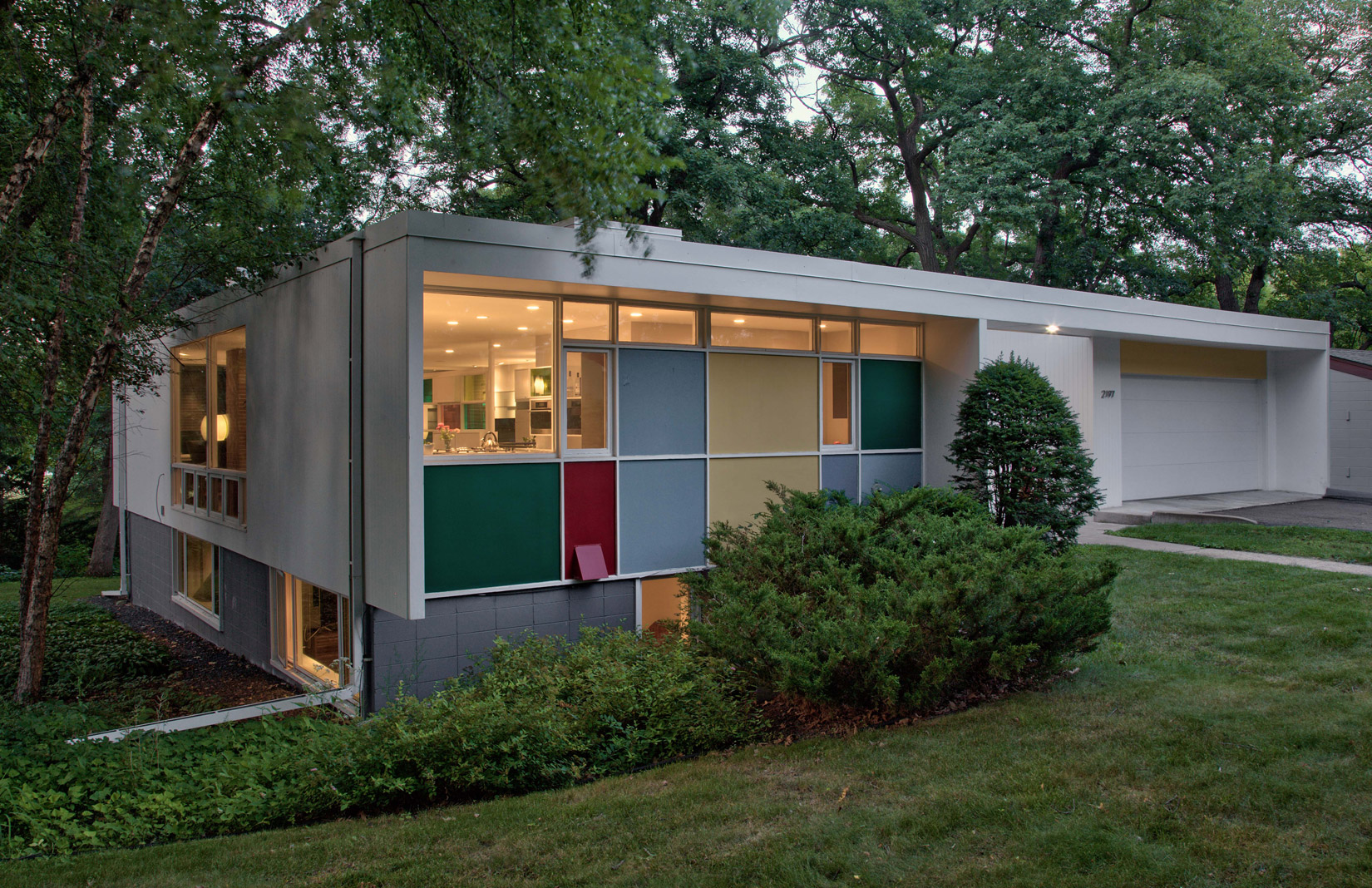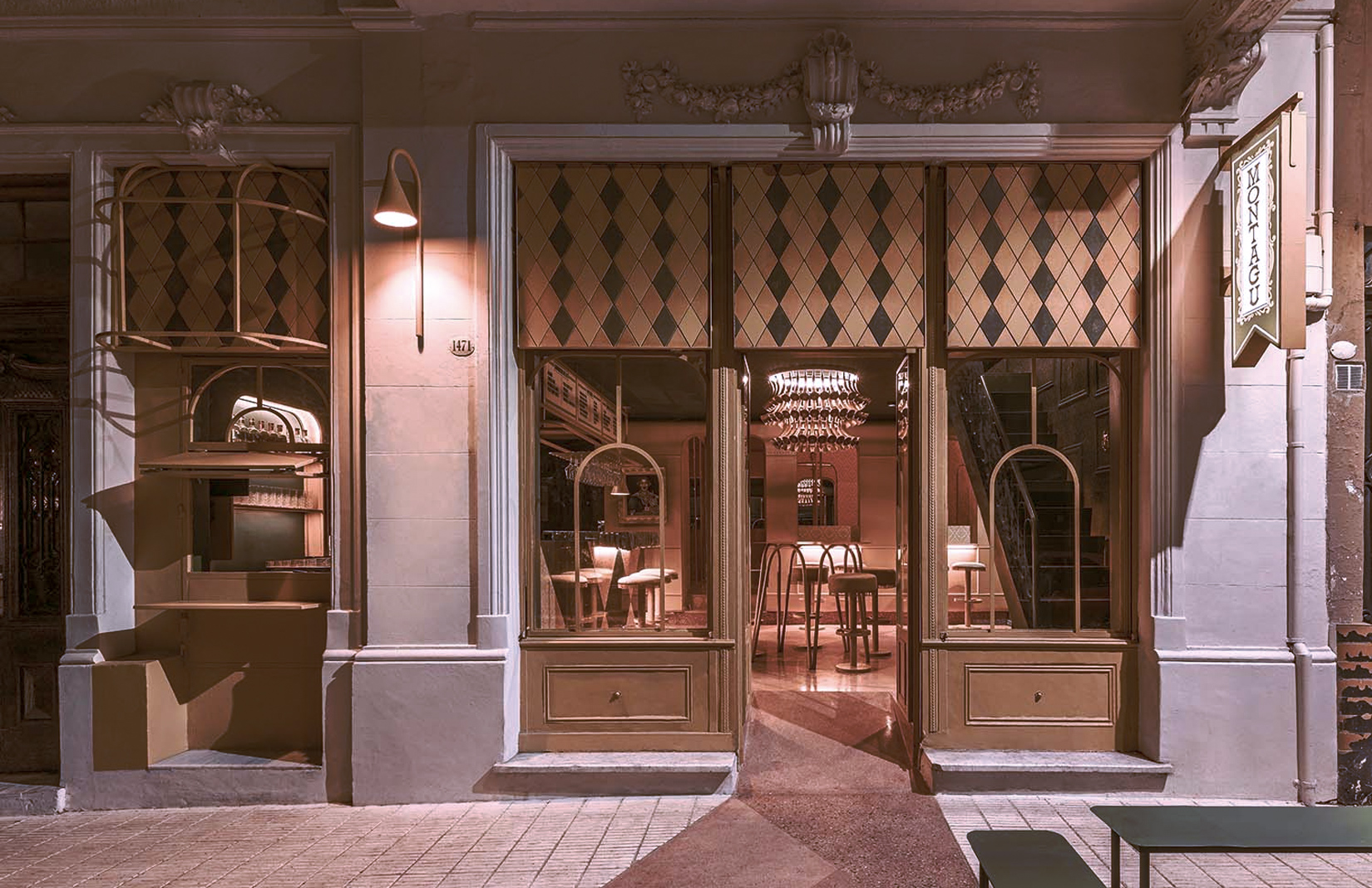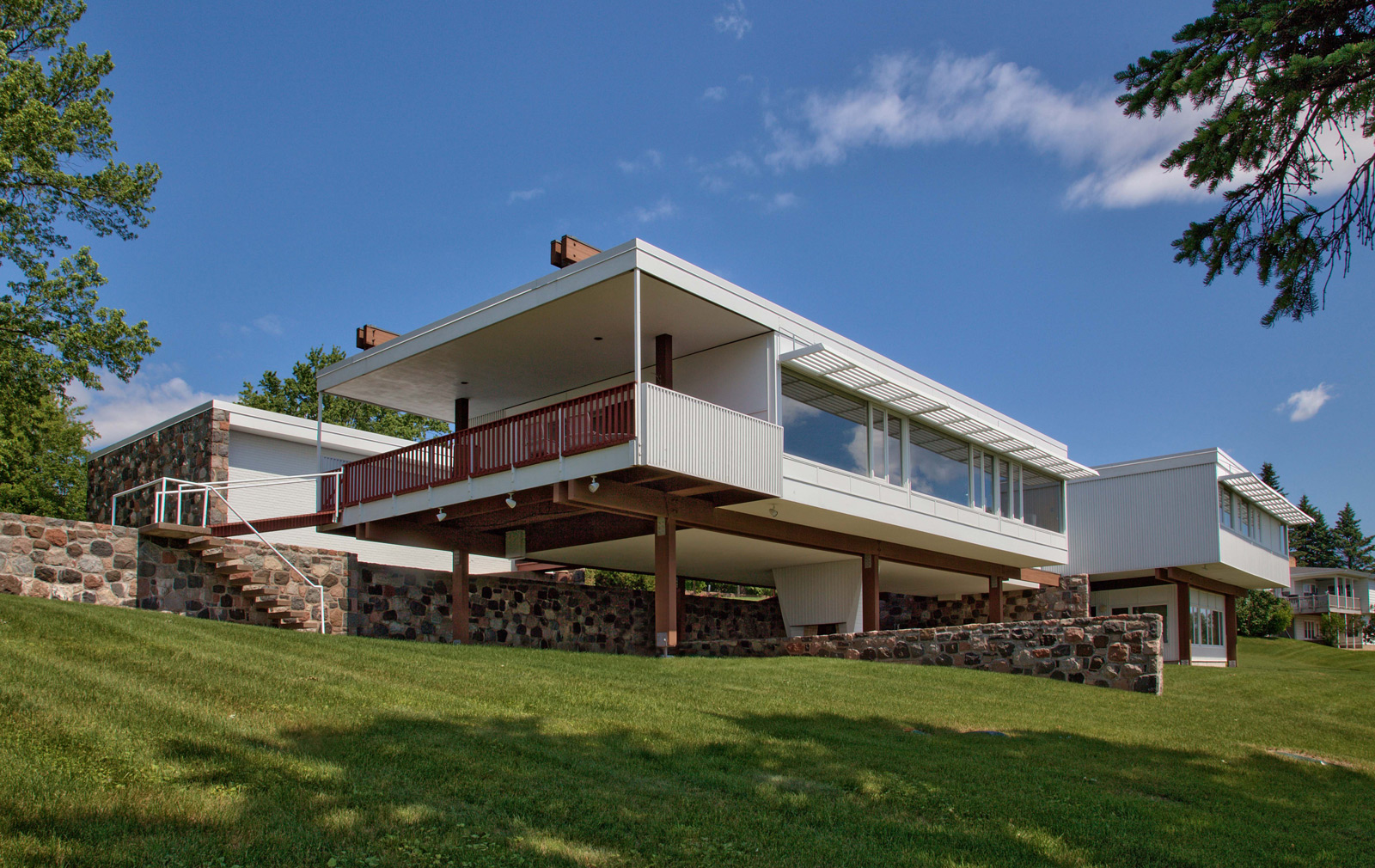
Think of Midcentury Modernism and your mind probably jumps to the Californian coast, with its plethora of Case Study houses. But Modernism took on a variety of flavours as its architects travelled their way across the US.
Minnesota’s Modernist offerings might lack the showiness of their Californian counterparts, and the idealism of their east coast compadres, but the state acted as test-bed for architects from Frank Lloyd Wright to Minoru Yamasaki.
In his latest book, Minnesota Modernism, architecture critic Larry Millett lifts the lid on the state’s treasure trove of Midcentury gems. We asked him to take us on a whistle stop tour of his favourites…
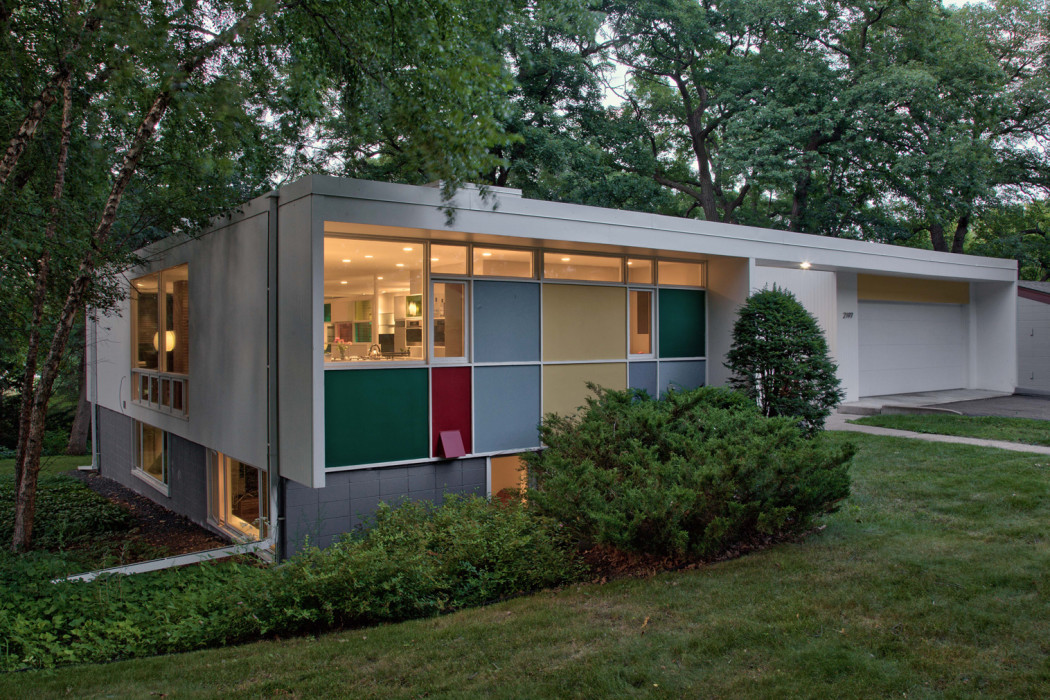
Shepherd House by Ralph Rapson. Multicoloured panels – something of a Rapson trademark – enliven the front of the Shepherd House, one of the many outstanding works of Midcentury Modernism in the University Grove neighbourhood of Falcon Heights. Photography: Denes Saari and Maria Forrai Saari
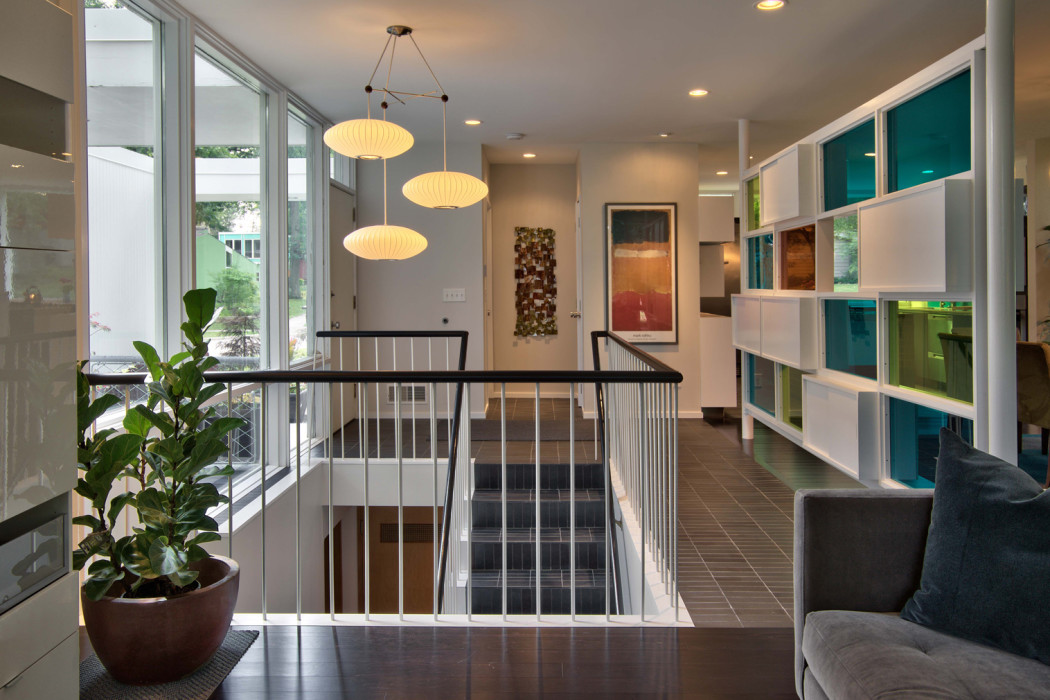
The property’s main entrance leads into a small foyer, where stairs go down to the home’s lower-level bedrooms. Photography: Denes Saari and Maria Forrai Saari
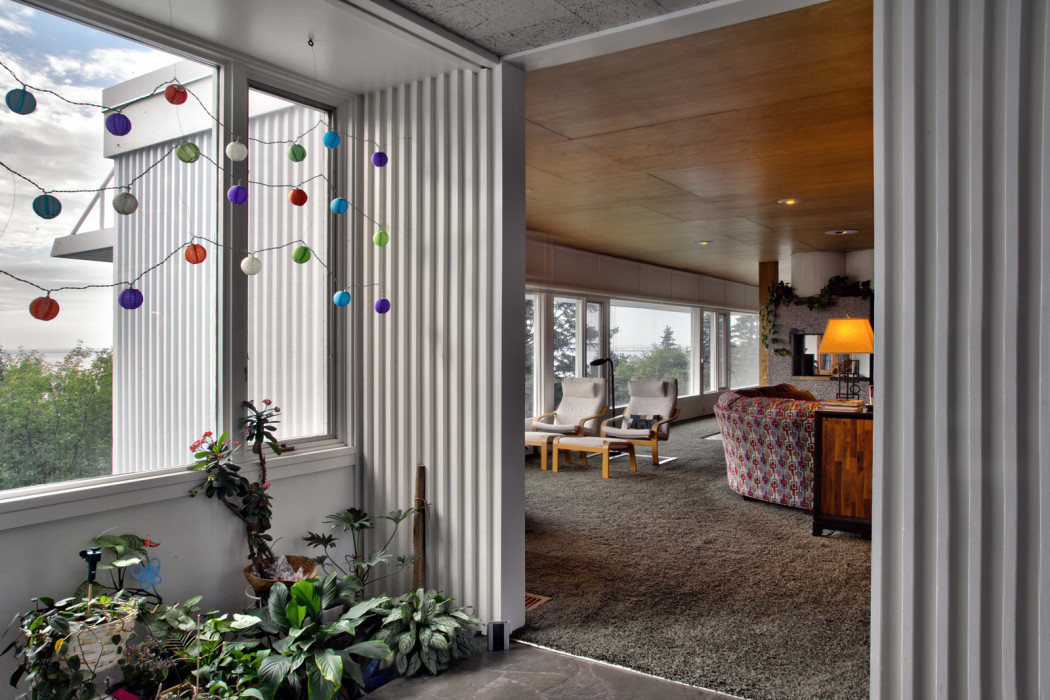
Alworth House by Marcel Breeur. Its entry, a mini-solarium, opens into a large, wood-ceilinged living room that offers views of Lake Superior. Photography: Denes Saari and Maria Forrai Saari

With its grand portico, the Northwestern National Life Insurance Building by Minoru Yamasaki, has often been likened to a Greek temple. Completed in 1964, it hovers somewhere between authentic grandeur and high kitsch. Photography: Pete Sieger
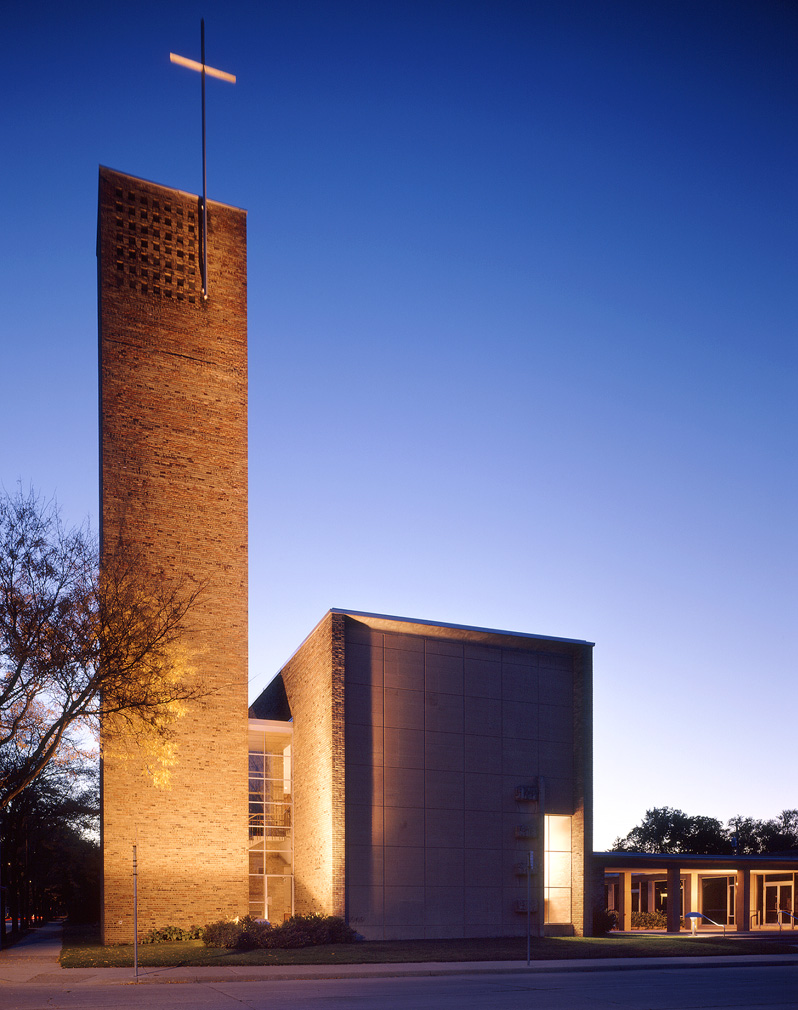
Christ Lutheran Church in Minneapolis, designed by the Finnish-born architect Eliel Saarinen and built in 1949, is among the early masterpieces of Midcentury Modernism in Minnesota. Photography: Pete Sieger
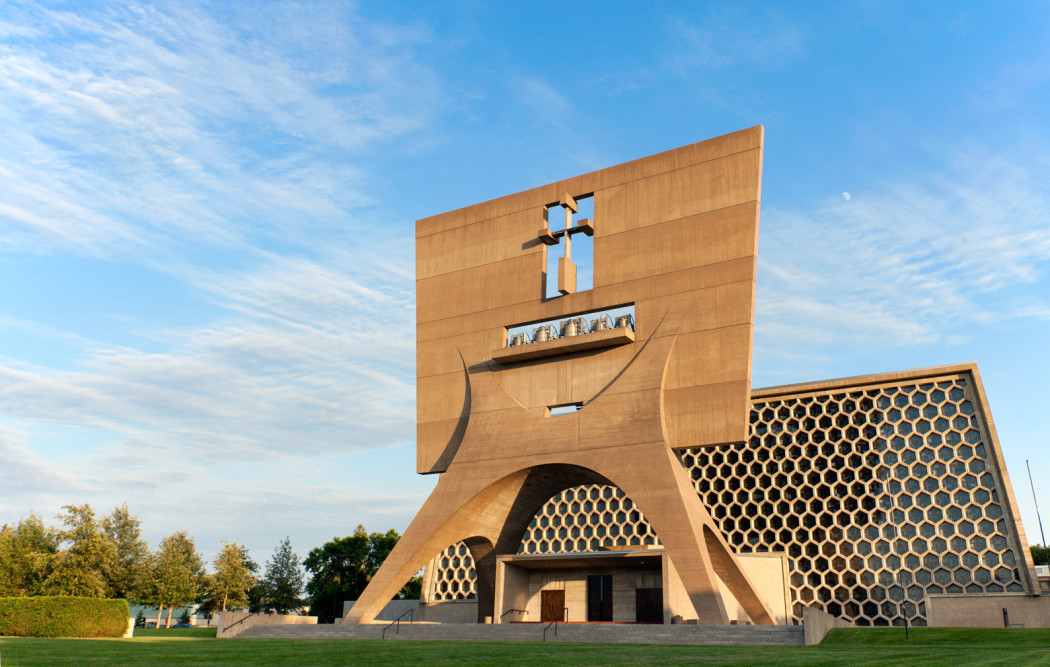
Marcel Breuer’s church at Saint John’s Abbey and University in Collegeville, was completed in 1961. Photography: Olga Ivanova
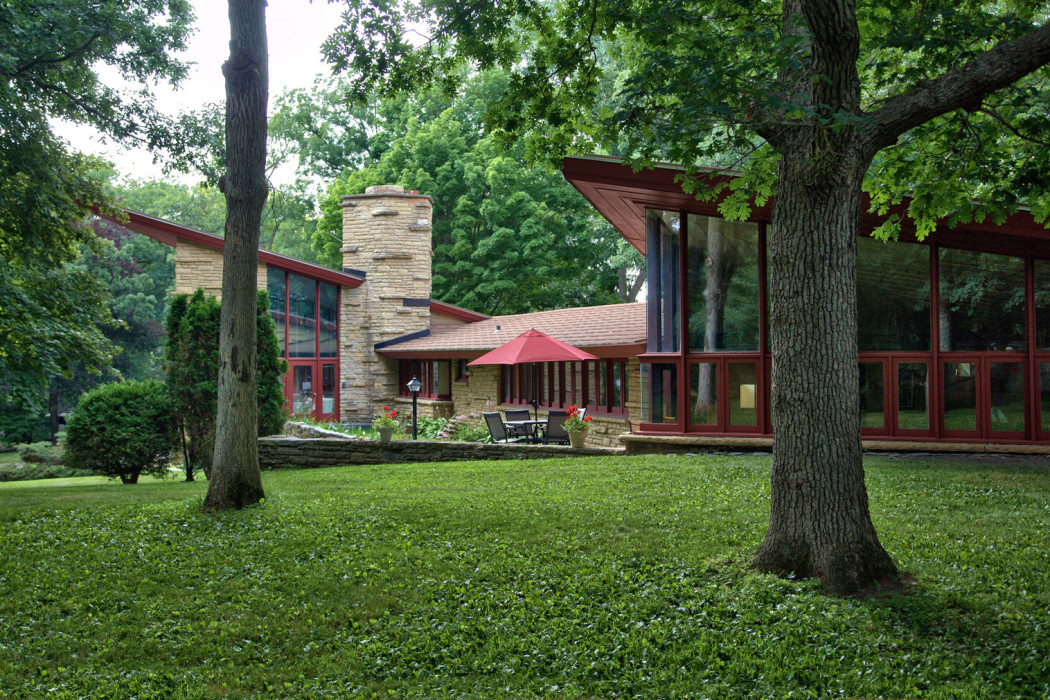
Elam House by Frank Lloyd Wright features two tall end wings set at a 45-degree angle to the house’s long central spine, creating a dramatic architectural profile. Photography: Denes Saari and Maria Forrai Saari
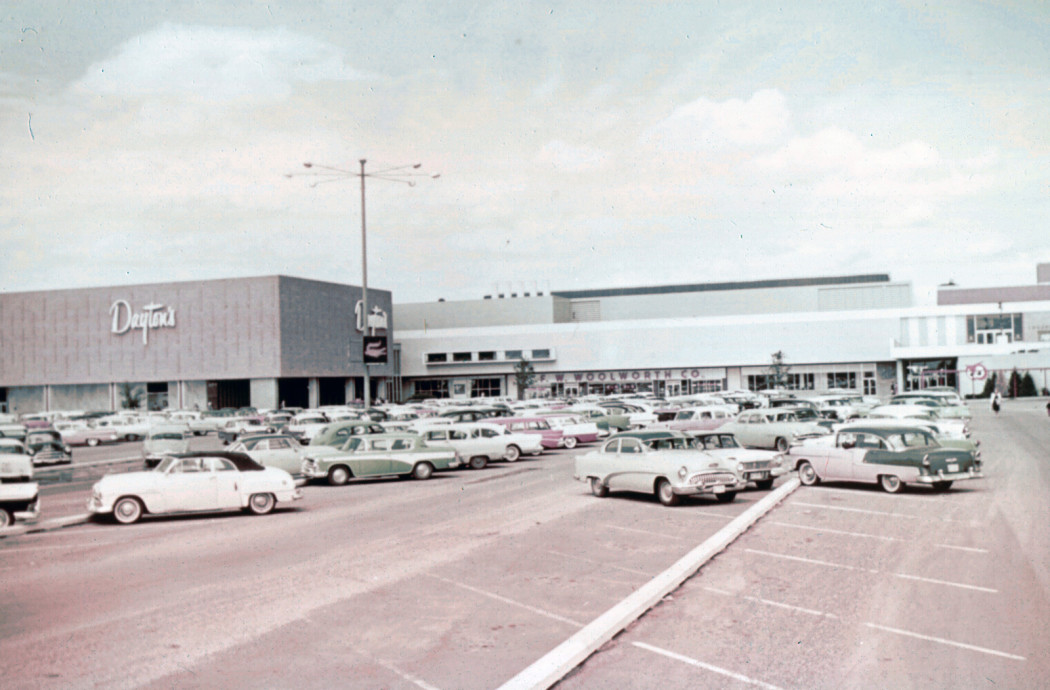
The Southdale Centre by mall-pioneer Victor Greuen. The Dayton Company developed Southdale in St Paul and provided one of its department stores as an anchor tenant. Parking lots were named after animals to help shoppers remember where they had parked their cars. Courtesy of Mark Susina
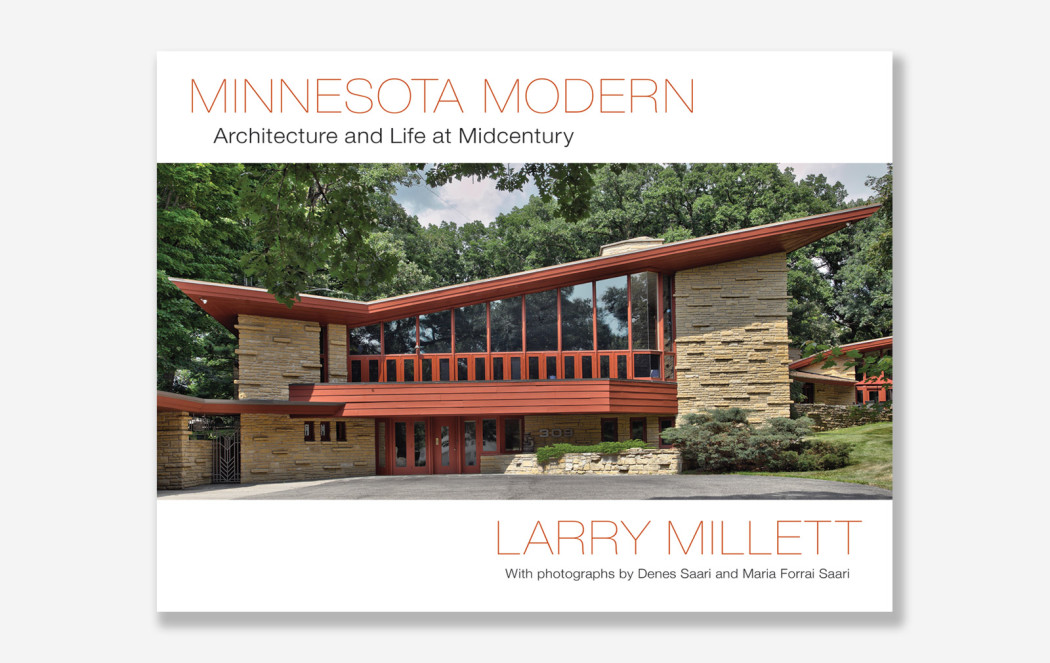
Minnesota Modern: Architecture and Life at Midcentury by Larry Millett is out now via the University of Minnesota Press
Larry Millett: Minnesota was an important outpost of Midcentury Modernism after World War II. Ralph Rapson, who in 1954 became dean of the School of Architecture at the University of Minnesota, played a pivotal role in bringing a modernist sensibility to the state.
Trained under Eliel Saarinen in Michigan, Rapson was not only a charismatic leader but also an outstanding designer. The Shepherd House (1957) in the St Paul suburb of Falcon Heights remains a fine example of Rapson’s bright, energetic work.
Dozens of architects educated at the university established or joined practices around the state after the war, designing thousands of commercial buildings, schools, churches, and residences. These architects did not produce a distinctive Minnesota ‘look,’ but they did favour boxy, straightforward designs, as opposed to the more theatrical brand of Midcentury Modernism that flourished in California.
A number of internationally renowned Modernists contributed to the state’s Midcentury legacy. Marcel Breuer designed the bold Alworth-Starkey House (1955) in Duluth, but is better known for his magnificent Abbey Church (1961) at Saint John’s University in Collegeville. The state’s most influential Midcentury church, however, was Christ Lutheran (1949) in Minneapolis, designed by Eliel Saarinen. Its subtle brick volumes became the model for scores of churches in Minnesota and across the United States.
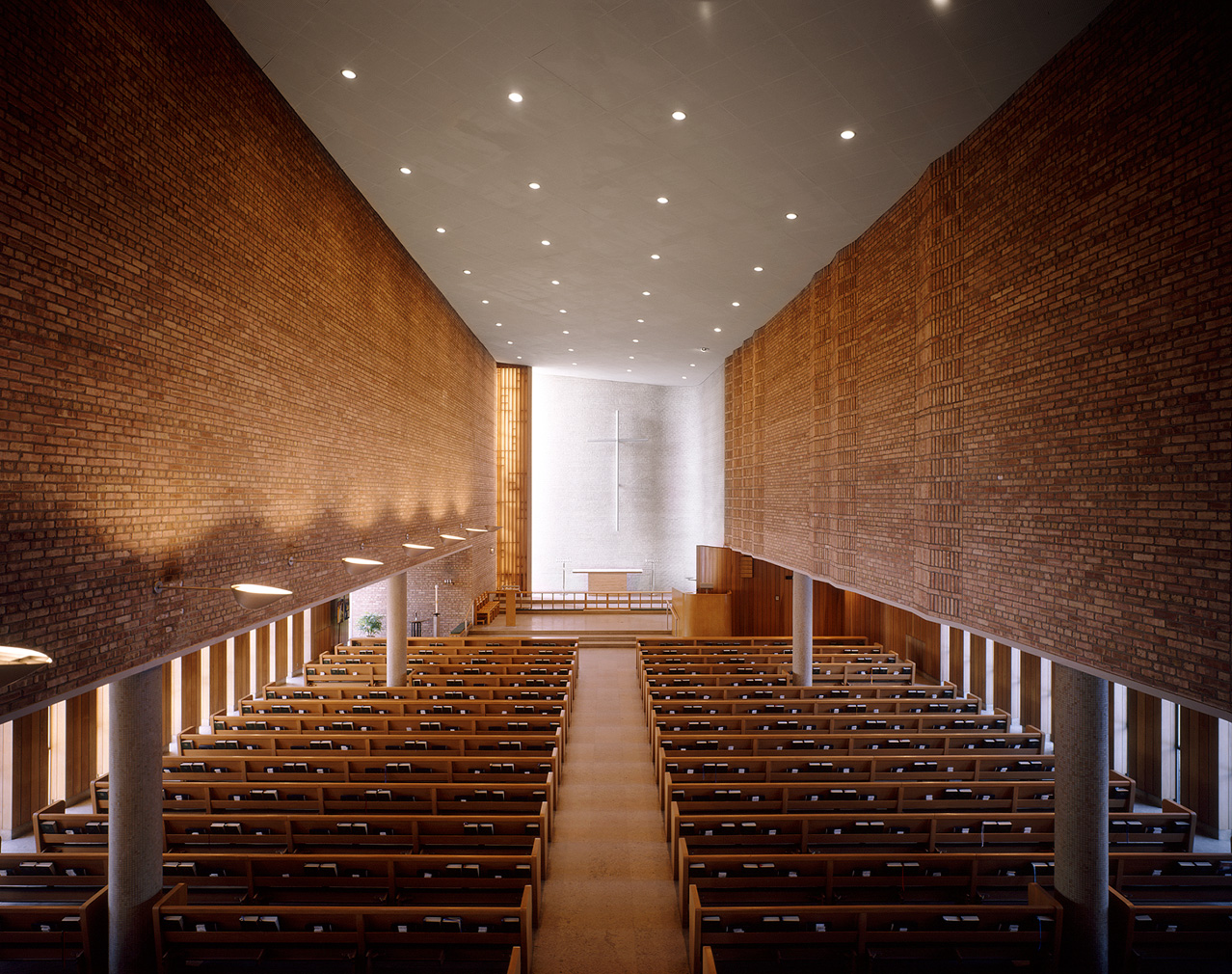
Among the numerous high-style Midcentury houses built in Minnesota, those of Frank Lloyd Wright (who hailed from neighbouring Wisconsin) are among the most notable. His Elam House (1952) in the small industrial city of Austin is a superb, and very large, example of his highly personal Usonian style. Minnesota is also home to Wright’s only service station, built in 1957 in the small town of Cloquet.
Minoru Yamasaki was another important Midcentury architect who left an imprint on Minnesota. Mostly remembered today as the architect of the now destroyed World Trade Center towers in Manhattan, Yamasaki was an intriguing designer whose buildings possess a kind of delicate formality. His Northwestern National Life Building (1964) in Minneapolis hovers somewhere between high art and high kitsch, and it’s become a beloved local monument.
But the state’s most famous Midcentury building may well be Southdale Center (1956), just outside of Minneapolis. Austrian-born architect Victor Gruen’s retail complex was the country’s first fully enclosed shopping mall, and as such it spawned thousands of descendants, including the giant the Mall of America just a few miles away.




